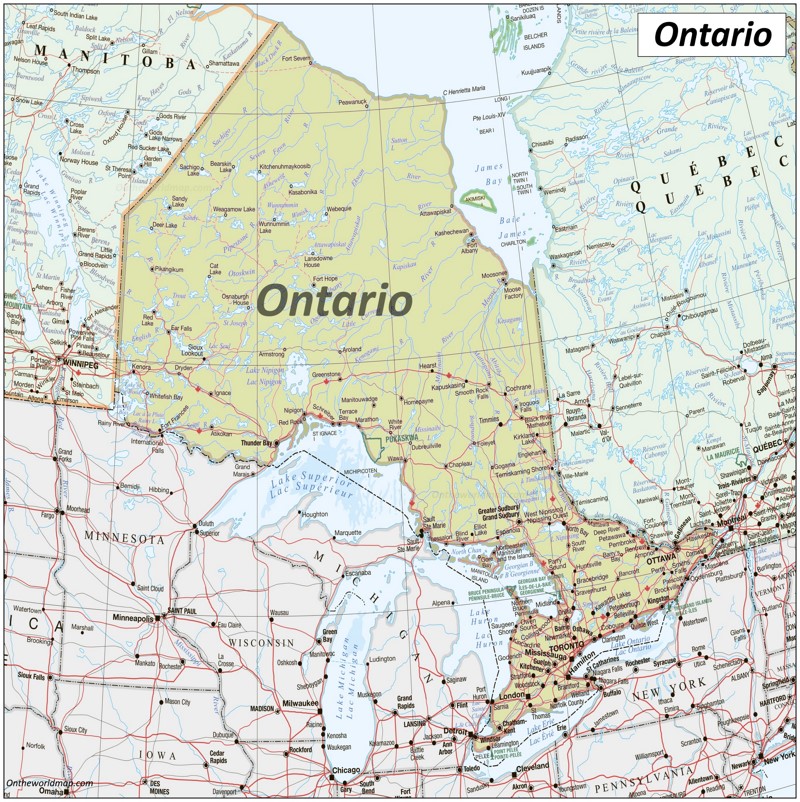Map of Ontario with cities and towns
Description:
This map shows cities, towns, rivers, lakes, Trans-Canada highway, major highways, secondary roads, winter roads, railways, and national parks in Ontario.
Size: 2730x2738px / 3.13 Mb
About cities in Ontario
Ontario is Canada's most populous province, home to approximately 15.9 million people as of 2025, representing over 38% of Canada's total population. Located in east-central Canada, the province covers an area of 1,076,395 square kilometers, making it the second-largest province by land area. Ontario borders Manitoba to the west, Quebec to the east, and shares an international border with the United States to the south.
Toronto, the provincial capital, is Canada's largest city with a population of approximately 2.8 million residents (2021 census), while its metropolitan area, known as the Greater Toronto Area (GTA), houses over 6.2 million people. As the country's financial and commercial hub, Toronto generates a significant portion of Ontario's economic output. The city is remarkably diverse, with nearly half of its residents born outside Canada, making it one of the world's most multicultural urban centers. Toronto's skyline is dominated by the iconic CN Tower, which stands at 553 meters tall and was once the world's tallest freestanding structure.
Ottawa, Canada's capital city, is also located in Ontario and is the province's second-largest city with a population of over 1 million residents. The city serves as the political center of Canada, housing federal government institutions, international embassies, and numerous national organizations. Ottawa's economy is primarily driven by the public sector, technology companies, healthcare, and education. The city is officially bilingual, reflecting Canada's dual English and French heritage.
Other major cities in Ontario include Mississauga (population 828,854), which hosts Toronto Pearson International Airport and numerous corporate headquarters; Brampton (603,846), a rapidly growing multicultural center; Hamilton (536,917), known as Canada's "Steel City" and an important Great Lakes port; London (383,199), a regional hub for education and healthcare; and Markham (328,966), which has positioned itself as a technology center. The "Technology Triangle" of Kitchener, Waterloo, and Cambridge forms an important innovation hub with numerous tech companies and startups.
Ontario's economy is the largest among Canadian provinces, generating approximately 37% of Canada's GDP. The province has a diverse economic base that includes manufacturing (particularly automotive), financial services, information technology, agriculture, and natural resources. Ontario's automotive sector is particularly significant, producing more vehicles than the U.S. state of Michigan. The province maintains strong trade relationships with the United States, its largest trading partner.
The climate in Ontario varies significantly from the relatively mild southern regions near the Great Lakes to the harsh subarctic conditions in the northern parts. In Toronto, average winter temperatures hover around -4°C in January, while summer temperatures average about 22°C in July. Northern Ontario experiences significantly colder winters and shorter summers.
Maps of Ontario: Ontario road map | Ontario highway map | Map of Southern Ontario | Map of Northern Ontario
You may download, print or use the above map for educational, personal and non-commercial purposes. Attribution is required. For any website, blog, scientific research or e-book, you must place a hyperlink (to this page) with an attribution next to the image used.
Maps of Canada
Provinces and Territories
Cities of Canada
Cities of Canada

